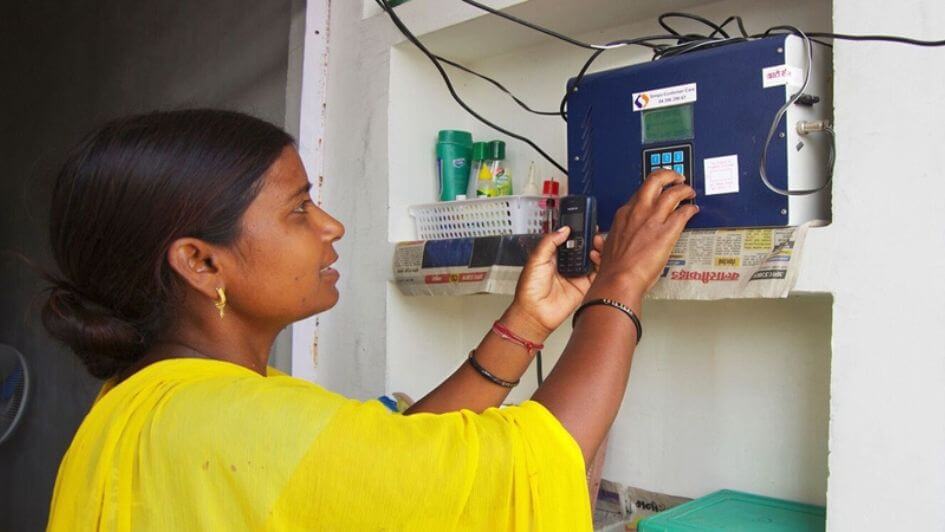In a recent article by the Washington Post titled "India joins rush to renewables, but its rural solar systems fall off grid", the tone suggests that India's efforts in harnessing solar energy, particularly through mini-grids, might be falling short. This perspective, while highlighting certain challenges, overlooks the broader picture and does not provide a comprehensive depiction of the adoption of mini-grid solar technology in India.
India's embrace of renewable energy has been vast and varied. While some earlier initiatives might have stumbled, the suggestion of a blanket failure of mini-grid solar systems in India in the article is not just misleading but a stark oversight of the commendable strides made in recent times. In the financial year 2021-22, India saw a record $14.5 billion investment in renewable energy, which is growing at a faster rate than any other major economy, with new capacity additions on track to double by 2026. Last year global accounting firm Ernst & Young ranked India – along with the U.S. and China – as one of the world's most attractive solar markets.
A significant highlight absent from the Washington Post's narrative is the Saubhagya Scheme. Launched in 2017, this ambitious program was pivotal in achieving almost 100% electrification by 2019. Moreover, the commercial viability and success of mini-grid solar technology in India is awe ins[inspiring. Established companies such as Husk Power, OMC, Tata Power, and Hamara Grid have collectively raised $150 million of private capital, powering over 1,000 mini-grids across India's vast landscape. These figures are not mere numbers but represent homes lit, businesses powered, and communities transformed by reliable, clean energy.
These investments are helping drive renewable energy sector jobs in India. Research that Power for All conducted in 2022 showed the distributed renewable energy (DRE) sector employed over 80,000 workers in 2021. Despite challenges posed by the COVID-19 pandemic, the sector has shown resilience and is expected to grow, potentially adding another 10,000 jobs by the end of this year. The growth is linked to India's ambitious renewable energy targets and an increasing demand for off-grid solutions such as rooftop solar. While the sector faces challenges such as access to finance and skill gaps, favorable policies and collaboration among stakeholders are aiding its expansion, highlighting the role of renewables in both employment generation and sustainable development in India.
Further reinforcing this narrative, research by Power for All highlighted the distributed renewable energy sector's role as a significant employer, boasting over 80,000 employees in 2021. Despite the pandemic, this sector is showing tenacity, with projections of 10,000 new jobs by the end of the current year. Such growth not only underscores India's commitment to renewable energy but also its role in sustainable development and job creation.
A pivotal point missing from the discourse is the evolution of India's approach to renewable energy. Mistakes made in the past have metamorphosed into lessons for the future. The evolution and adaptability of government-funded mini-grids, especially their responsiveness to community needs, offers a playbook for many developing nations grappling with similar challenges.
The Washington Post article “Well-planned mini-grids can help with electrification” by EarthSpark International’s president further provides an illuminating perspective on the global potential of structured mini-grids. Their groundbreaking work in Haiti, with its first solar-powered community grid, mirrors the advances seen in India by companies like Husk Power and Tata Power. Ashvin Dayal, senior vice president of power and climate for the Rockefeller Foundation, acknowledges India’s grid-based and distributed renewable energy efforts as a model that can put developing economies on a high-energy, low carbon growth pathway. This asserts that the global community, including philanthropic giants like the Rockefeller Foundation, recognizes India's model as one that carries the potential to redefine pathways for developing economies.
While skepticism and critique are intrinsic to journalistic inquiry, it's paramount that stories of successes, especially ones as impactful as mini-grid solar technology in India, are not overshadowed. As we stand at the precipice of climate disaster, a global just transition to renewable energy sources is absolutely critical. This reflects how the article “India joins rush to renewables, but its rural solar systems fall off grid” challenges the nation’s success in the renewable energy sector but fails to inspire and acknowledge the significant successes being made along the way.
